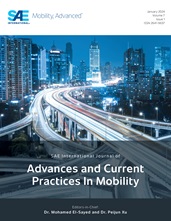In recent years, the realization of carbon neutrality has become an activity to be tackled worldwide, and automobile manufacturers are promoting electrification of power train by HEV, PHEV, BEV and FCEV. Although interest in BEV is currently growing, vehicles equipped with internal combustion engines (ICE) including HEV and PHEV will continue to be used in areas where conversion to BEV is not easy due to lack of sufficient infrastructures. For such vehicles, low-viscosity engine oil will be one of the most important means to contribute to further reduction of CO2 emissions. Since HEV requires less work from the engine, the engine oil temperature is lower than that of conventional engine vehicles. Therefore, the reduction of viscous resistance in the mid-to-low temperature range below 80°C is expected to contribute more to fuel economy. On the other hand, the viscosity must be kept above a certain level to ensure the performance of hydraulic devices in the high oil temperature range. In order to achieve both of these characteristics, an oil whose viscosity has smaller temperature dependency (flat viscosity oil) is required. The flat viscosity oil can be achieved by using a low-evaporative, low-viscosity base oil and an ultra-high viscosity index Viscosity Modifier. It proved the possibility to achieve fuel economy equal to or better than 0W-8 while maintaining 0W-16 equivalent high temperature viscosity. This technology is applicable for vehicles calibrated with either 0W-16 or 0W-8 without negative impact on fuel economy performance. The flat viscosity 0W-16 will improve the fuel economy of in-use vehicles calibrated with conventional 0W-16 oils in the market significantly. As a result, CO2 reduction can be achieved not only for new vehicles but also for vehicles in operation in the market that can contribute greatly to the carbon neutrality. In order for the flat viscosity oil to be widely used in the world, it is necessary to establish new engine oil specification.
